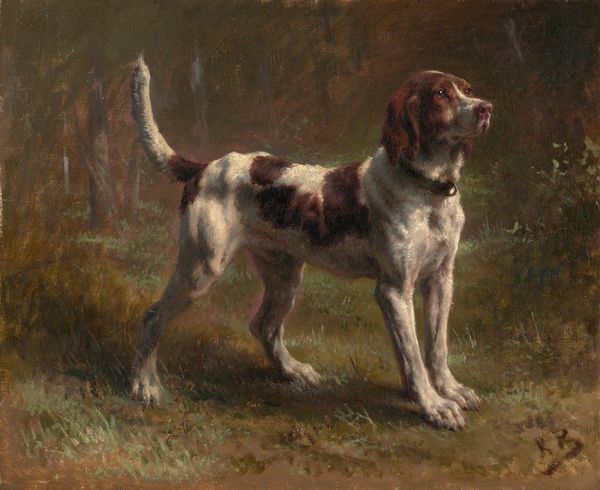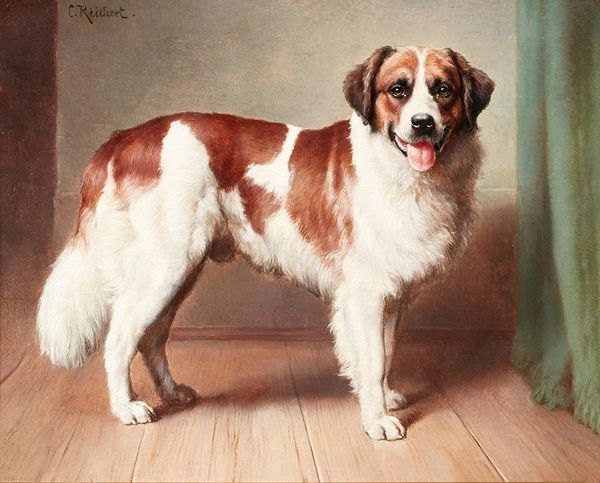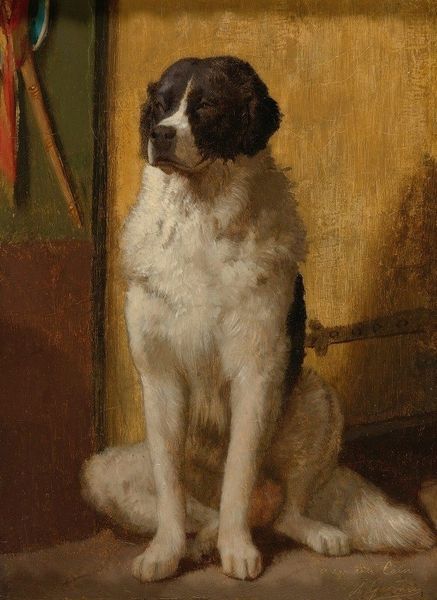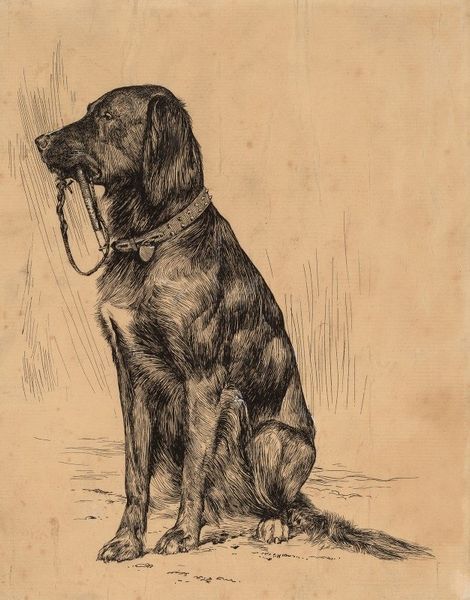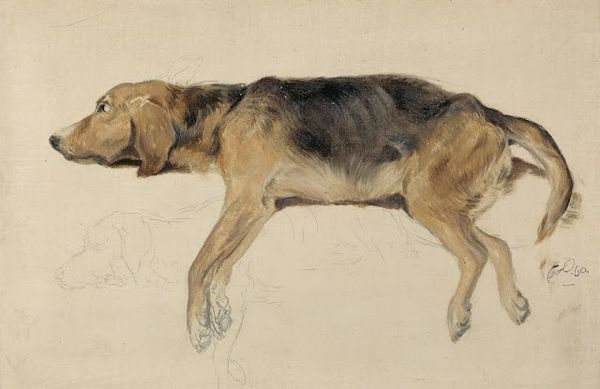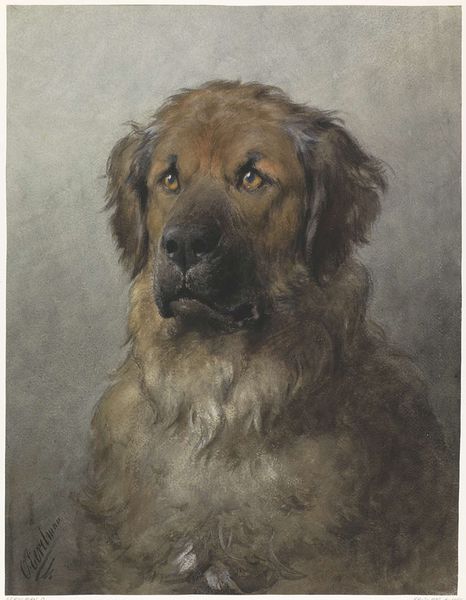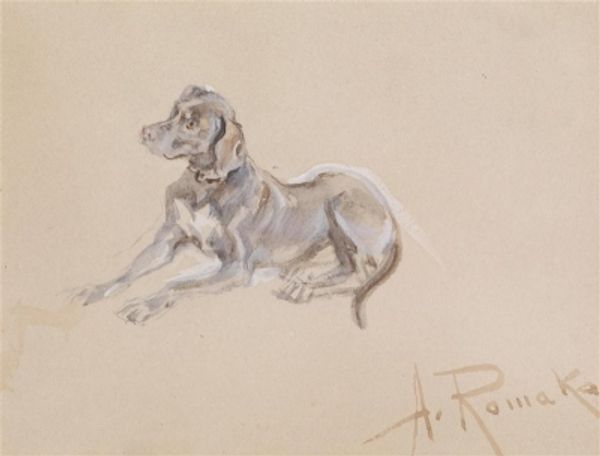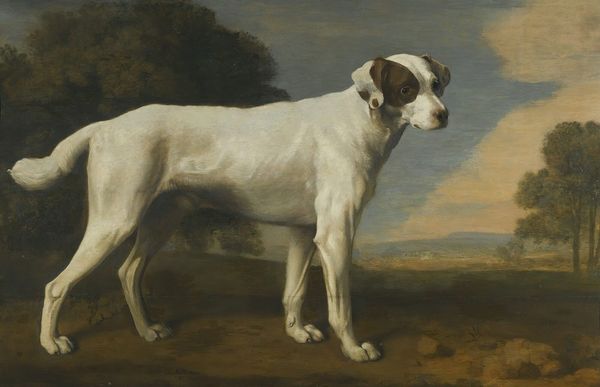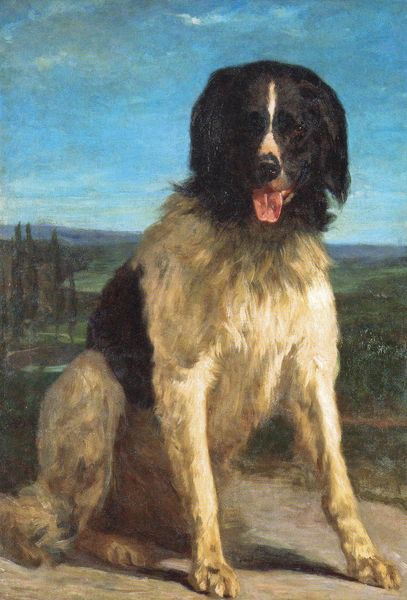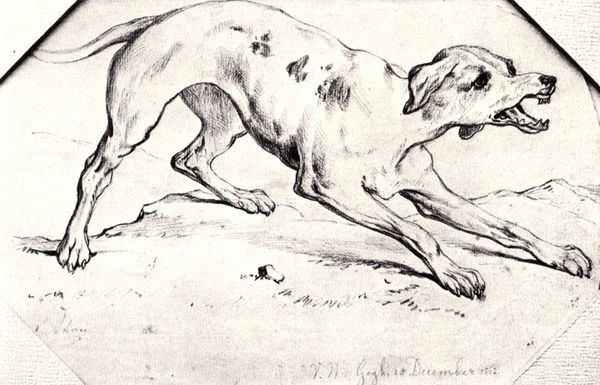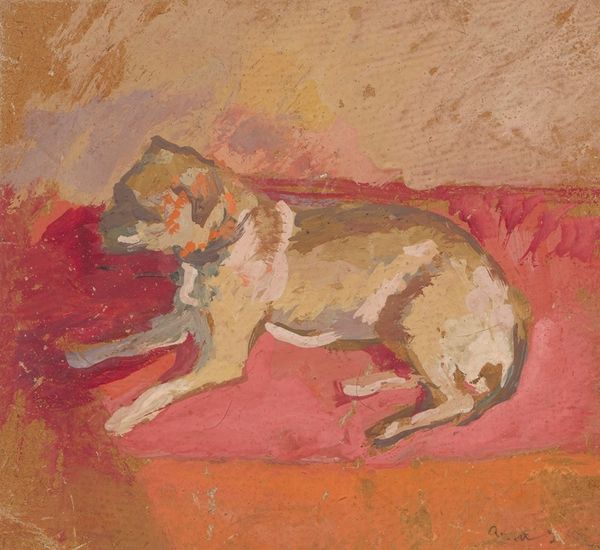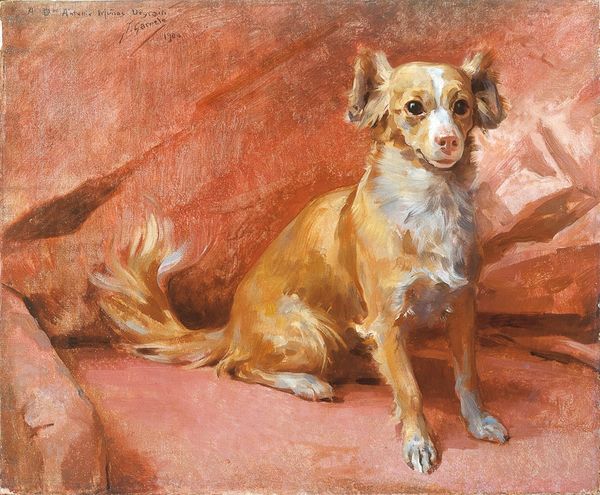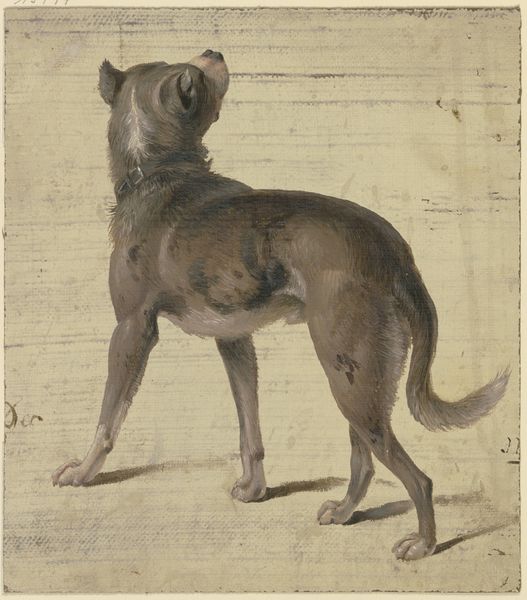
painting, oil-paint
#
animal
#
painting
#
oil-paint
#
landscape
#
charcoal drawing
#
oil painting
#
animal portrait
#
genre-painting
#
academic-art
#
realism
Copyright: Public Domain: Artvee
Editor: Here we have a painting entitled "Study of the dog of homère et son guide," by William Bouguereau, made with oil paints. I’m immediately struck by its realistic depiction, but the pose is unusual, facing away. What symbols or deeper meanings do you find in this study? Curator: It is striking, isn’t it? To look at the back of something implies it is going away. But it is more than that: think of dogs, protectors, guides. Notice the open mouth, mid bark. It suggests the animal's alertness and the sound implies impending warnings or a presence of vigilance. The way the dog is painted, we immediately identify the symbolism as safety or something more significant for the human companion off-canvas. Have you thought about canine imagery and their emotional or protective symbology throughout time? Editor: I hadn’t considered the symbolic weight of the barking or protection aspect so explicitly. I was focusing on the rather informal, “unfinished” quality of a study and more focused on his attention to light and anatomy. So you’re saying this symbol acts like an avatar? Curator: Indeed! The dog, though literally unseen, carries a legacy within our cultural memory and acts on behalf of humans, in this painting, maybe a family. In your response to realism, do you agree this style assists the connection to human sentiment and feeling through familiar images? Editor: I think that makes a lot of sense. Now I am connecting this idea to his other works. Curator: This exploration helps bridge historical understanding and your own engagement, allowing new layers of symbolism to emerge in the visual narrative! Editor: Exactly! I appreciate you showing how those concepts have carried through the centuries. Thanks for your insights.
Comments
No comments
Be the first to comment and join the conversation on the ultimate creative platform.
